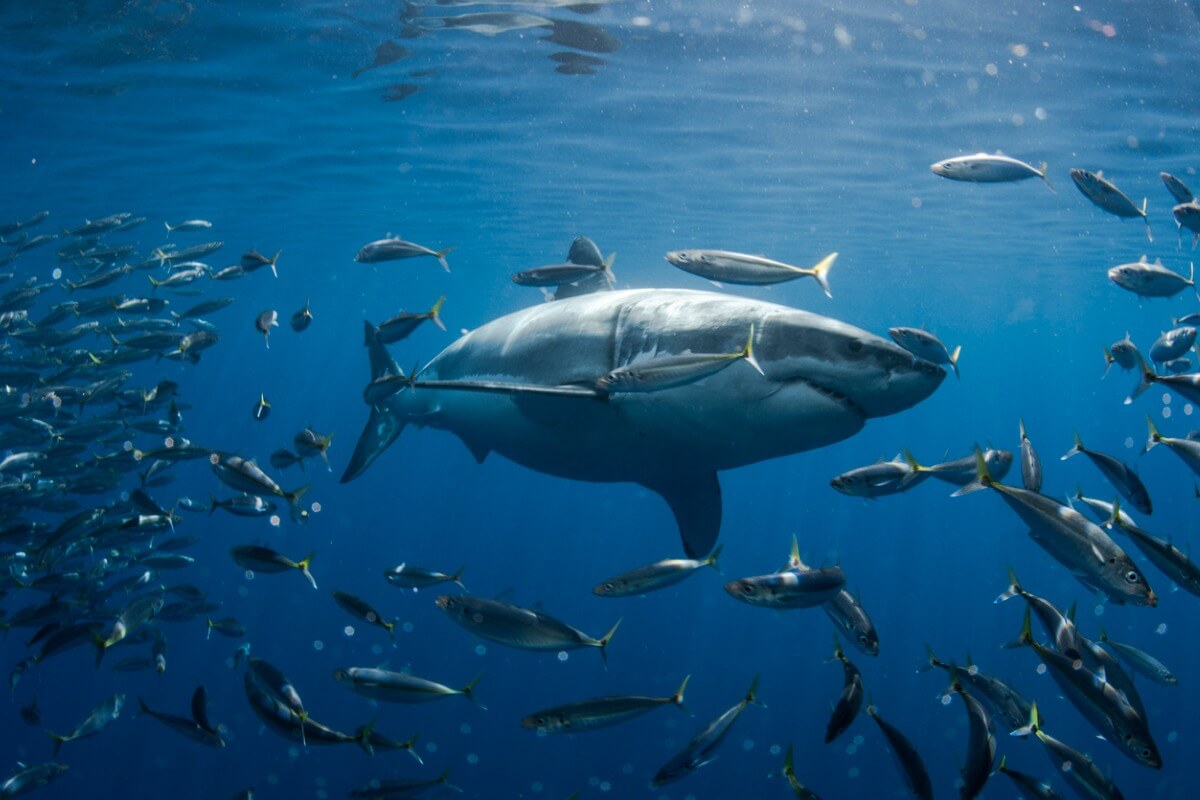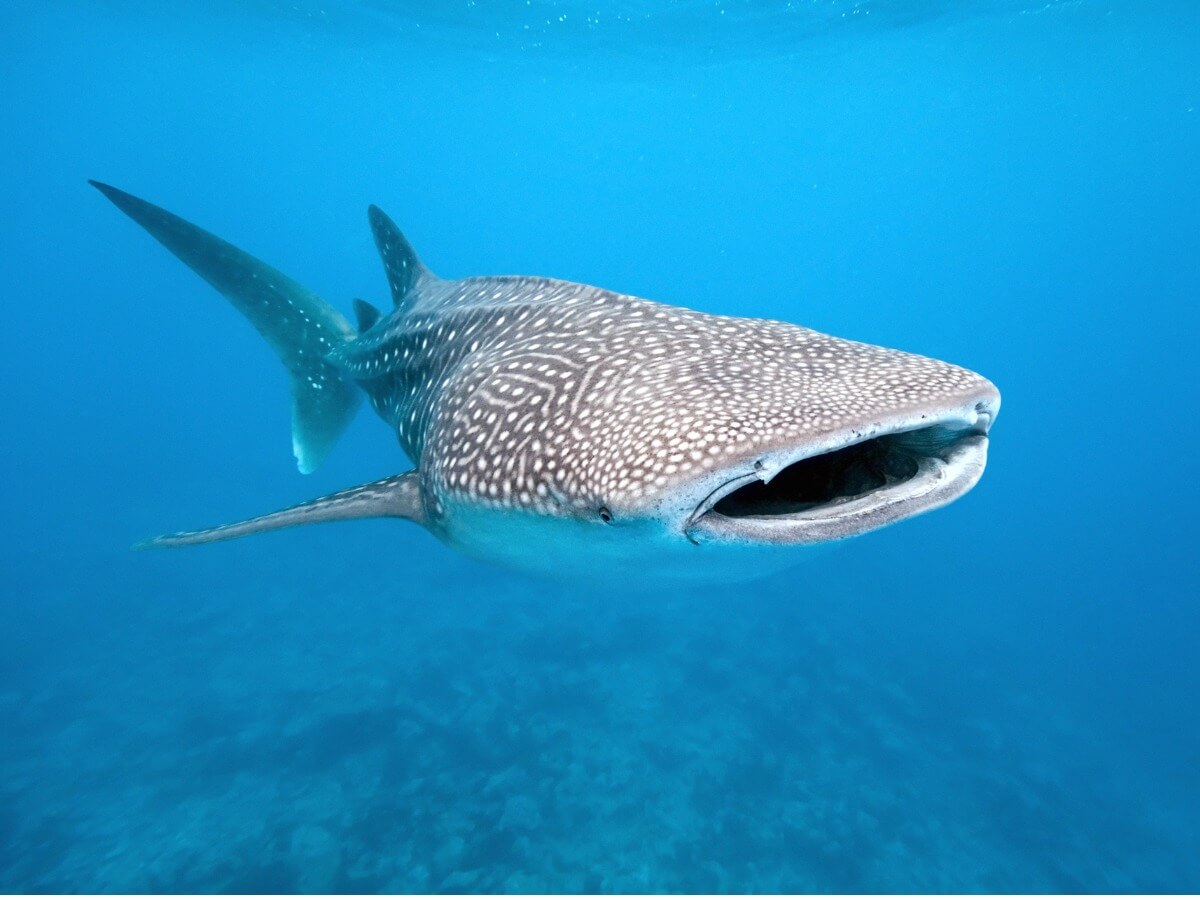The World's Largest Omnivore Is a Fish

Omnivores are a group of animals that feed on both animals and plants. This strategy allows them to survive in a wide range of environments, as they choose their food according to the resources available in the area. Most of these species are terrestrial and measure no more than a few meters, but a recent study seems to indicate that the world’s largest omnivore is actually a fish.
This discovery is quite strange, as most fish don’t use chewing to grind their food. Because of this, their diet is restricted only to organisms that they’re able to digest in one bite. However, it seems that this hasn’t prevented them from being the world’s largest omnivore. Continue reading and find out which species it is.
Types of fish
The group of fish is made up of different types of organisms that don’t always have similar characteristics. In fact, the term “fish” doesn’t refer to a taxonomic group, so it lacks scientific validity. However, because it’s still used as a colloquial name for various specimens, it has been left as a reference in professional literature.
It’s difficult to determine which animals are classified as fish and which aren’t. Even so, most professionals agree on at least integrating the following subgroups:
- Cartilaginous fishes (Chondrichthyes): These include sharks, rays, manta rays, and chimeras.
- Bony fishes (Osteichthyes): These include two major classes, Actinopterygii and Sarcopterygii, which include most of the species that are colloquially called “fish”.

Omnivorous fishes are usually small
While there’s a wide variety of fish in both saltwater and freshwater, the physical characteristics of the species don’t always allow them to have a broad diet. As mentioned above, most of these animals don’t tend to chew their food, which is sometimes essential when eating plants.
Although they can’t chew, some species choose to eat fairly small plants and animals that are easy to digest. Thanks to this, they’re able to have an omnivorous diet that allows them to maintain several adaptive advantages. However, the amount of food they need to satisfy their needs is so high that they don’t always reach large sizes.
Do giant fish exist?
For a fish to reach sizes of several meters long, it needs to consume a large amount of food or fairly large prey. This condition is too difficult to meet, especially as most of them have a restricted diet. Because of this, only a few species such as sharks, beluga sturgeon, paddlefish, paddlefish, and manta rays have achieved this feat.
A curious aspect of these large animals is that almost all are predators (carnivores). This is because their meat contains high amounts of protein that are essential to maintain their muscles and sizes. Even so, according to a study published in the magazine Ecology, there’s a type of fish that’s omnivorous and even larger than the previous examples.
The world’s largest omnivore
The whale shark (Rhincodon typus) is considered to be the largest fish in the world, reaching sizes greater than 18 meters (59 feet) in length. To reach these sizes, it feeds on a large amount of small organisms such as krill, different small fish, and zooplankton.
The way this shark catches its prey is by means of a filtration strategy. This means that it absorbs a certain amount of water through its mouth and filters it to trap the small organisms it feeds on. Thanks to this, with just a few “aspirations”, it’s able to extract tons of food and satisfy its nutritional needs.
Because its diet was composed of animals, it was always considered a carnivorous animal. However, it was recently discovered through analysis of the fatty acids that whale sharks produce, that they’re also capable of digesting plant matter. This means that the whale shark is actually the world’s largest omnivore!

How did experts figure it out?
It’s important to note that the filtration process of the whale shark “catches” animals and a certain amount of plant matter. Of course, the simple fact of consuming “plants” doesn’t mean that it’s capable of digesting them, so a more exhaustive analysis was needed to confirm that it was taking advantage of these nutrients.
To do this, the specialists examined certain components of a seaweed known as Sargassum, which is found in the shark’s area of distribution. In addition, they took samples of the fatty acids produced by the whale shark. When analyzed together, they observed that both shared some molecules in their composition, meaning that the shark assimilated the nutrients from the algae.
This research showed that the whale shark takes full advantage of its environment and consumes more resources than originally thought. Thanks to this, it’s able to maintain its size consistently, which explains why it’s so successful as a predator. Despite this, and as with other wonderful species, it’s currently threatened by indiscriminate fishing.
All cited sources were thoroughly reviewed by our team to ensure their quality, reliability, currency, and validity. The bibliography of this article was considered reliable and of academic or scientific accuracy.
- Rodríguez-Dowdell, N., Enríquez-Andrade, R., & Cárdenas-Torres, N. (2008). Tiburón ballena. Bahía de los Ángeles: recursos naturales y comunidad. PRONATURA Noroeste/INE/SEMARNAT/SDNHM, México DF, 363-383.
- Meekan, M. G., Virtue, P., Marcus, L., Clements, K. D., Nichols, P. D., & Revill, A. T. (2022). The world’s largest omnivore is a fish.
- Alsmadi, M. K., & Almarashdeh, I. (2020). A survey on fish classification techniques. Journal of King Saud University-Computer and Information Sciences.
- Pierce, S. J., & Norman, B. (2016). Rhincodon typus. The IUCN red list of threatened species, e-T19488A2365291.
